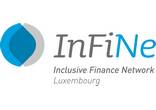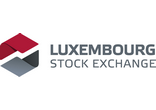
The future of finance is Green
The future of green finance and the growth of green investment were the main topics of the first PwC Green Finance Day
With the growing interest in sustainable finance and green investment products, the importance of green finance and its impact on having a more sustainable planet were the main topics discussed on 30 March at the first PwC Lux Green Finance Day. After the initiation of the Climate Finance Task Force in 2015 to advise the government on joining the fight against climate change, Luxembourg now takes the lead on the development of green financial services and products. Counting with the expertise of private and public sector players, the conference explored in depth the strategies put in place so far, the opportunities and challenges of the Luxembourg’s green financial centre and the potential new business models that will arise from these changes. Read more to learn the conclusions of the PwC Lux Green Finance Day.

Luxembourg, leader of responsible investment
Steven Libby, partner at PwC Luxembourg, kicked-off the conference by describing why Luxembourg is the main developer of this market and how it is taking the lead in green financing and sustainability. According to him, “green financial went from a niche to a substantial market, with Luxembourg on the front seat. As the global financial industry awaked for the importance of sustainable services, in 2017, the global green bond market surpassed USD 150bn of annual issuance.” Before any action was taken at the European level, Luxembourg started its journey to a sustainable economy over 30 years ago. The government took the lead with the development of a climate finance toolkit, followed by players from the private sector that joined the cause and contributed to the acceleration of the development of climate finance. Currently, there are number of opportunities for the private sector. According to Carole Dieschbourg, Minister for the Environment in Luxembourg, the Grand Duchy took the lead in climate finance by becoming conscious that people have been taking advantage of an economic system that isn’t sustainable and offers limited solutions on the social and environmental sphere. Luxembourg has been able to recognise this new need to sustainable financing ; moreover, its position as the main European financial centre facilitated new climate developments and financial strategies. Pierre Gramegna, Minister of Finance in Luxembourg, highlighted that Luxembourg is a huge financial centre, composed by 139 banks, thousands of investment funds and the largest ecosystem for investment funds in the world after the United States. In addition, the Grand Duchy has a total market share of 39% of responsible investment funds in Europe, over 60% of European impact funds as well as over 60% of global microfinance assets(1). Considering the importance of investing in green solutions, Luxembourg set to invest EUR 20 million on international green financial sector.
Strengthening public and private partnerships to create a greener future
Luxembourg faces an annual funding gap of 3 trillion dollars to achieve the sustainable goals set by the United Nations, which should be reached by 2030. According to Julie Becker, member of HLEG, Head of Luxembourg Green Exchange (LGX) and Member of the Executive Committee of Luxembourg Stock Exchange (LuxSE), today, Luxembourg has EUR 100 billion of sustainable financial instruments in the Luxembourg Green Exchange. However, public financing is only half of the whole cake. The private sector plays an important role too and the opportunities of investment are still limitless. The cooperation between the private and public sector remains essential to develop a green and sustainable economy.
When it comes to the global level, the European Union took the lead in delivering concrete recommendations to the European Commission to frame a sustainable financial system. The Commission developed an action plan with three broad objectives : directing capital flows towards sustainable investment and broadening the base of investment of sustainable finance ; embedding sustainability in risk management and managing financial risks coming from climate change and social issues ; and fostering transparency and long-term projects. This action plan was a crucial step forward to develop a global green financial system and economy.
The need for tangible solutions
Between regulations, frameworks and investments, there is a need to set up solutions that are applicable to current global challenges. According to Julie Becker, the main challenge is to have a clear definition of what is Green and sustainable to avoid misplaced investments in something that is neither green nor sustainable. The solution is to define a set of standard labels on green and sustainable activities. Following the need for common definitions, companies from the financial sector need to include sustainability in their core businesses and strategy in long-term.
As for Luxembourg, Steven Libby described some of the main green initiatives already in place locally. In 2016, for example, the Luxembourg Green Exchange (LGX) launched a dedicated platform for green, social and sustainable securities displaying today 170 securities. The value of green bonds passed the EUR 50 billion mark, making it the biggest of all the dedicated green bond segments or lists on stock exchanges throughout the world. In June 2017, the European Investment Bank (EIB) celebrated the 10th anniversary of the first evergreen bond, the Climate Awareness Bond“, listed in Luxembourg in2007.
Minister Pierre Gramegna also stressed that the banking sector is investing in sustainability projects with companies from the private sector to create long-term solutions for climate change.
Nev Hyman, Founder and General Partner at NEV-House, presented his company as a successful green business case in Luxembourg. He proposes a tangible solution for one of the biggest environmental challenges of our time : plastic recycling. Its mission is to transform all types of plastic into deployable infrastructures and other waste into energy.
What does the future hold for green finance ? This was the main topic of a panel moderated by Jörg Ackermann, partner and Michael Hauer, senior manager at PwC Luxembourg. The participants debated the Luxembourg’s sustainable journey, the current financial situation and challenges and how, in a long-term, the new sustainable system would look like in 2030.
Luxembourg has embarked on a journey to sustainability, keeping in mind the 2030 deadline to have a fully sustainable financial system. The participants of the panel shared their views on the complex and fast-evolving road map of the Grand-Duchy. They shared their recommendations on what should be done next to meet the deadline of 2030, taking in consideration the support from the European Union and the European Commission. The participants concluded that this is a never-ending journey, as markets are always changing and developing. Luxembourg can offer financial stability and long-term solutions that should serve as an example for other countries, to raise awareness to the global solutions already explored and developed in the country.
Nathalie Dogniez, partner at PwC Luxembourg, closed the conference by presenting 2018 as the year for sustainability, showing that people’s perception of sustainable investment has been shifting and that 78% believe sustainable investment is becoming an essential part of a bright green future .
The thoughts and knowledge exchanged throughout the event showed the willingness of both private and public sectors to be part of this green future and explore new opportunities to make this sustainable journey a successful European story.
Note :
(1) According to the Climate Bonds Initiative
Communiqué par PwC Luxembourg










